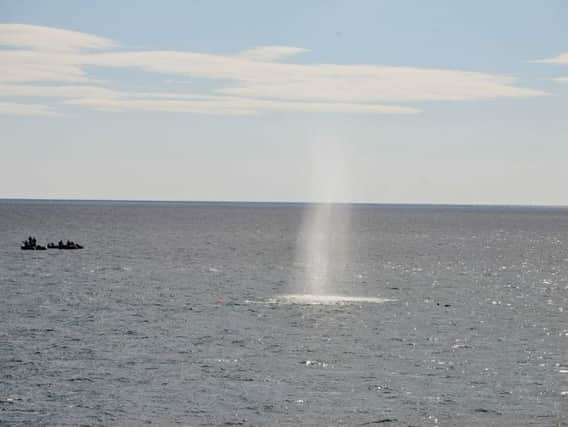The wartime shipwrecks which still lie off the North East coast


SM UC-32, World War One
SM UC-32was a German Type UC II mine-laying submarine in the German Imperial Navy during the First World War.
The U-boat was credited with sinking six ships, either by torpedo or by mines it laid. UC-32 was sunk when one of her own mines detonated on February 23 1917 near Sunderland.
Advertisement
Hide AdAdvertisement
Hide AdSS Don, World War One
SS Don was a freight vessel built by William Dobson and Company in Walker Yard. She served in the fleet of the Goole Steam Shipping Company from 1891, including the deadly waters of World War One.
On May 8 1915, she was torpedoed and sunk in the North Sea seven nautical miles (13 km) east of Coquet Island by Germand U-boat SM U-9 . Her crew survived.
SS Hebble, World War One
She was built by William Dobson and Company in Walker Yard for the Goole Steam Shipping Company Limited.
Advertisement
Hide AdAdvertisement
Hide AdShe was requisitioned by the Admiralty in the First World War and struck a mine and sank in the North Sea 1.5 nautical miles (2.8 km) east of Roker, Sunderland, with the loss of five of her crew.
HMS Unity, World War Two
Builty by Vickers Armstrong, HMS Unity was one of the first U-class submarines in the Royal Navy. It entered service in 1938 and performed war patrols during the Second World War.
She was accidentally rammed by a Norweigan ship during low visibility off the coast of Blyth on April 29 1940.
Two members of her crew, Lieutenant John Low and able Seaman Henry Miller, gave their lives remaining behind in the flooded control room so their shipmates could escape from the sinking vessel.
HMS Ascot, World War One
Advertisement
Hide AdAdvertisement
Hide AdThe minesweeper ship was the last to be sunk in the First World War, torpedoed by a German U-boat off the Farne Islands.
She was the last ship to be sunk in the First World War, torpedoed by a German U-boat off the Farne Islands on november 10 1918, the day before the announcement of the armistice.
She lies at a depth of 60 metres.
HMS G11, World War One
She was one of six G-class Royal Navy submarines of the Royal Navy which saw service during the First World War patrolling the North Sea in search of German U-boats.
On 22 November 1918 she was returning to her base at Blyth, Northumberland, from Dogger Bank patrol following the Armistice. Sailing through dense fog, she overshot Blyth and ran aground on rocks below cliffs near Howick.
Advertisement
Hide AdAdvertisement
Hide AdTwo of her crew died during evacuation: the body of Telegraphist George Philip Back was recovered and buried in the churchyard of St Peter & St Paul, Longhoughton.
The body of Stoker Pliny Foster was never found. G11's regular captain, Lieutenant Richard Douglas Sandford VC, was in hospital with typhoid fever during his ship’s last mission, so was not on board.
He died the day after learning his vessel had been lost. Remains of G11 can still be seen at low tide.
MS Oslofjord, World War Two
Able to carry 860 passengers, the ocean liner was built in Bremen, Germany, for the Norwegian America Line in 1938.
Advertisement
Hide AdAdvertisement
Hide AdShe sank on January 21/22 1941 after hitting a mine off the River Tyne on 1 December 1940, after just two years of service.
SS Empire Bay
A collier ship built by W Gray & Co Ltd, Hartlepool, in 1940, she was owned by the Ministry of War and managed by the Joseph Constantine Steamship Line Ltd.
She was sunk by German bombing off Middlesbrough on 15 January 1942.
Mystery U-boat, World War Two
In 2014, satellite imagery found the wreck of a German U-Boat off the Seaham coast. The submarine had lain on the bottom of the North Sea since it was destroyed with depth charges by an RAF aircraft near the end of the war in 1945.
Advertisement
Hide AdAdvertisement
Hide AdHigh resolution pictures taken from space by the NASA Landsat 8 satellite and analysed using computer systems. The company behind the technology, Merlindown Science, said they had no details about the incident, although an RAF aerial photograph of the explosion which destroyed the u-boat had been found.